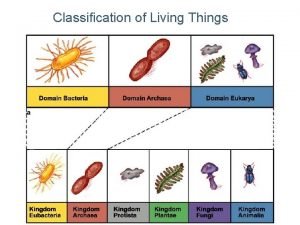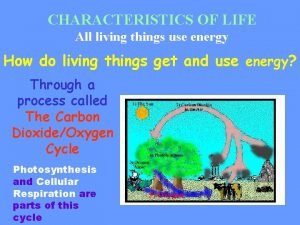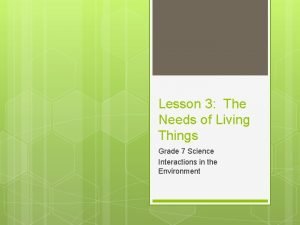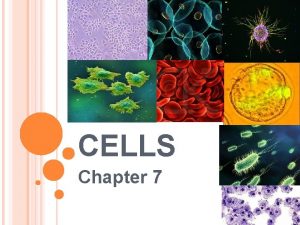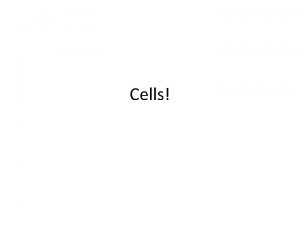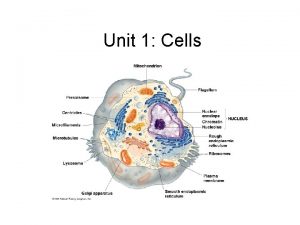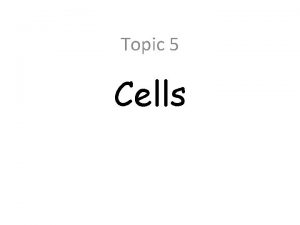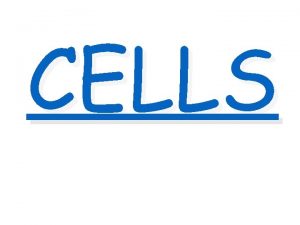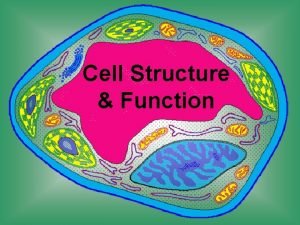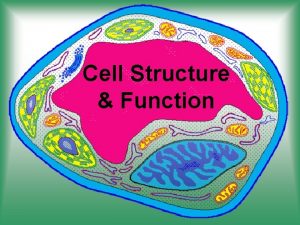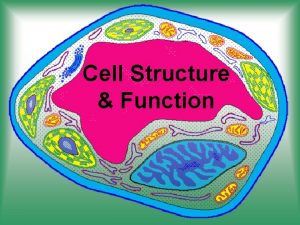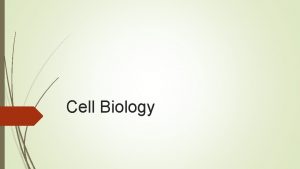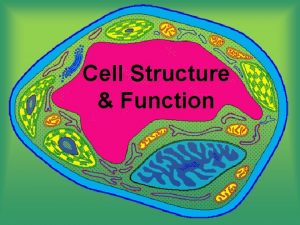CELLS The Cell Theory All living things are















- Slides: 15

CELLS

The Cell Theory • All living things are made of cells. • Cells are the basic structural unit of life. • All cells come from pre-existing cells.

Prokaryotes and Eukaryotes

Prokaryotes and Prokaryotic Cells • NO membrane bound organelles – Most functions within the cell happen in one common space – No compartmentalization or specialization; single cells function alone (no tissue formation) • Generally smaller and more simple • Examples – Archaea – Bacteria

Prokaryotes (Archaea and Bacteria) • Cell wall – Made of peptidoglycan (sugars and amino acids) • Capsule – Protective shell • Nucleoid region – Clump of DNA • Plasmid – Extra loops of DNA • Ribosomes – Structures that translate DNA and produce proteins • Pili – Hairs for attachment

Eukaryotes And Eukaryotic Cells • Membrane bound organelles – Allow for compartmentalization, specialization, tissue formation (multiple cells working together in a single unit) • Generally larger and more complex • Examples – Animals – Plants – Fungi – Protists

Animal Cells • NO cell wall • Centrioles – Made of microtubules help in cell division

Plant Cells • Cell wall of cellulose • Centrosomes – made of microtubules help in cell division • Chloroplasts – convert energy from sun into sugar (photosynthesis) through cellular respiration • Central vacuole – Stores water for structural support

Fungus Cells • Cell wall of chitin (same thing insect exoskeletons are made of) • Spindle pole bodies made of microtubules help in cell division • NO chloroplasts or photosynthesis

Protists • First eukaryotes – Early ancestors of animals, plants and fungi • Usually single-celled – All have a single-celled stage in life cycle – Sometimes colonial (group together) • Animal-like, plant-like, fungal-like – May be a combination of characteristics

Prokaryotic Cell Movement • Flagella – Mechanical complex of proteins organized into rotary motor – Rotates like a propeller • Gliding Motion – Utilizes secretions and viscosity

Eukaryotic Cell Movement • Flagella – Tail like structure that uses whipping motion for locomotion; – Ex: spermatozoa, protists • Cilia – Hair like structure that uses beating motion for locomotion or movement of substances – Ex: Bronchial and fallopian tube lining, protists • Pseudopods – Amoebic, blob-like movement – Ex: White blood cells, protists

Cell Structures • Cytoplasm: cellular matrix; the jelly-like substance everything is suspended in; made mostly of water • Organelles: “little organs; ” structures found within the cell that carry out certain functions – Only eukaryotes have membrane bound organelles

Cell Boundaries • Plasma Membrane: all cells have outer membrane containing the cytoplasm and organelles • Cell Wall: thick, hard, outer layer for structure and protection; most prokaryotes and some eukaryotes. Not in animal cells.

Next… • Cell membranes and cellular transport
 Antigentest åre
Antigentest åre Cell tissue organ organ system organism
Cell tissue organ organ system organism What is the smallest living unit in the body
What is the smallest living unit in the body Looking at living things
Looking at living things Venn diagram living and nonliving things
Venn diagram living and nonliving things The 8 levels of classification
The 8 levels of classification Life cycle of all living things
Life cycle of all living things What are the 5 basic needs of all living things
What are the 5 basic needs of all living things Different types of living organisms
Different types of living organisms Throwaway living
Throwaway living Chapter 4 cell theory and cell study
Chapter 4 cell theory and cell study Sphenoid paranasal sinus
Sphenoid paranasal sinus Proximal convoluted tubule
Proximal convoluted tubule Parafollicular
Parafollicular How are somatic cells different from gametes
How are somatic cells different from gametes Why dna is more stable than rna?
Why dna is more stable than rna?





